Welcome to the Site! We are currently restructuring as we expand our Holistic Context (January 2017)
Please find Bright Sky’s Permaculture Diploma here. You can see how to use this site.
Welcome to the Site! We are currently restructuring as we expand our Holistic Context (January 2017)
Please find Bright Sky’s Permaculture Diploma here. You can see how to use this site.
The Pathway
Primary permaculture design certification achieved in February 2012 with teacher Christian Shearer and Geoffroy Godeau. During the following internship at Rak Tamachat Permaculture, a peer review and support group was formed between myself, Theron Beaudreau, and Chowgene Koay. The goal was to receive a permaculture diploma through the British Permaculture Association by completing 10 projects over 10 weeks. In the four years since that initial goal, Theron has entered a program with Gaia University as a Diploma Mentor. Chow has shifted his attention to managing the family business.
Through many conversations with students, friends, and colleagues, the most resonant path was an independent study and self-validation. The pathway came to completion in January 2016.
+Summary of field work 2012-2016
+Video thesis 2016
Projects: One Two Three Four Five Six Seven Eight Nine Ten
My goal is to complete a two year study of Applied Permaculture Design using the standards of the British Permaculture Association, in association with materials designed by Richard Perkins,in order to become an accredited permaculture practitioner.
After taking my PDC, I realized that I had just grazed the surface of sustainable systems, and I was eager to put these new concepts and strategies into practice… we realized there are limited options for higher level permaculture education in the United States. We decided to break some new ground…
-Bright Sky, Page 1, Project 1
Greeting, space travellers.
We are delving into a different passage of time – blog writing!
January 2017
Project report title: Project Ten: The Arizona Trail
Summarize how and why you organized this Project Output as presented (Reflect on your design, process, method and purpose): This project output is probably my favorite of all the projects. One of the reasons I like it is that I get to include a full spectrum from my journals. These really are the core of my practice, the skill of 10,000 hours, and usually I just include bits and pieces from whiteboards, etc, but for this output report I chose to include every page from the entire time we were actually on the trail. This was paired with the complete photo album. The second half of the project report is the information I actually sent to the Arizona Trail Association in their request for information on the trail conditions.
How did this process go? It was thankfully easy. The documents for the ATA were on google and just needed importing. Lucky, because they were probably the last documents I created on my computer before it volunteered for a permanently secret mission to an unknown part of the world. Scanning the journal notes took about two hours, and an additional two hours to get them to the right orientation and file type. Saving the pictures from the harddrive, onto Flickr was also a process with many steps.
What did you learn? I learn that I do a lot of work and then often forget about it. The work of disseminating the information is often equal to the amount of work it took to assemble the information, is often equal to the amount of work it took to do the project in the first place.
What tools did you use (An explanation of the technical side of creating this project report. What software did you use? What digital literacy was required to put this together)? I used a scanner for the journal notes, and Flickr for the photo album. I used VUE for one of the mind maps, Pages for the financial analysis and miles per day. I uploaded them through WordPress, and wha-la!
Did you find any people or tutorials particularly useful in creating this project report? I looked at Theron’s work to be inspired by the VUE, and followed basic tutorials for the accounting bit.
How much time did you spend in creating this project report? The project report for the AZT took about 10 hours, scanning, uploading, and transferring files an additional 10. Around 20 hours total.
How well have did you showcase your learnings in this project report? Would you consider this project report satisfactory if it was prepared by another person? The learnings here are the experiential capital of finding & carrying my own water, navigating through unknown terrain, and observing nature. I would say this is a great showcase for the experience.
Any final reflections on your pathway integration and development? I’m so glad this came up as it did. Project Ten was an incredible journey, and was such an essential piece of learning. Going directly to the beauty and rhythms of our natural world is a more complete education that anything you can learn on YouTube University.
This is a general summary of expenses over the four years. It includes the first half of 2012 in Thailand during the permaculture internship, through Pennsylvania at the end of 2015.
According to this summary, the total hard (cash) expenditures for this education over four years was $25,600. This includes all personal basic needs, as well as tuition, and the contextual costs for gaining +experiential capital.
+Interestingly, when a rough presentation of this information was given to the /r/financialindependence community on Reddit, their reaction was to proclaim this the system of a “bum.” If we truly desire a society that consumes consciously, we need to start looking at the edge between what you need to survive, and what you need to root, prosper, and return a surplus.
For me, the financial aspect is the baseline for being able to operate effectively. Diane Leafe Christian calls it good governance.
Most of the chart is self-explanitory – rent, books, etc. I did make a distinction between “food” – which means prepared food, or going out to eat, and “grocery,” which is food I bought from markets or grocery stores to prepare myself.
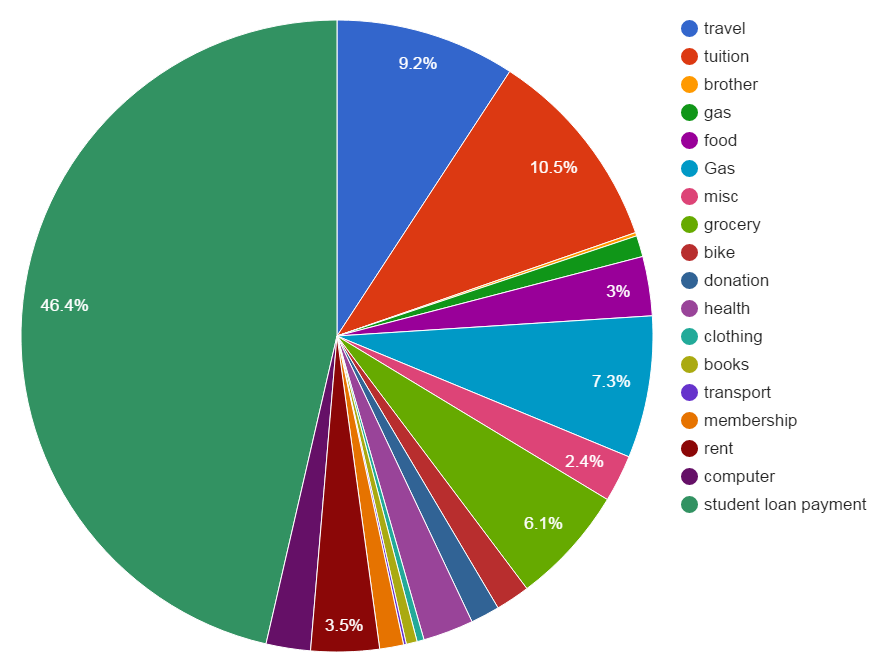
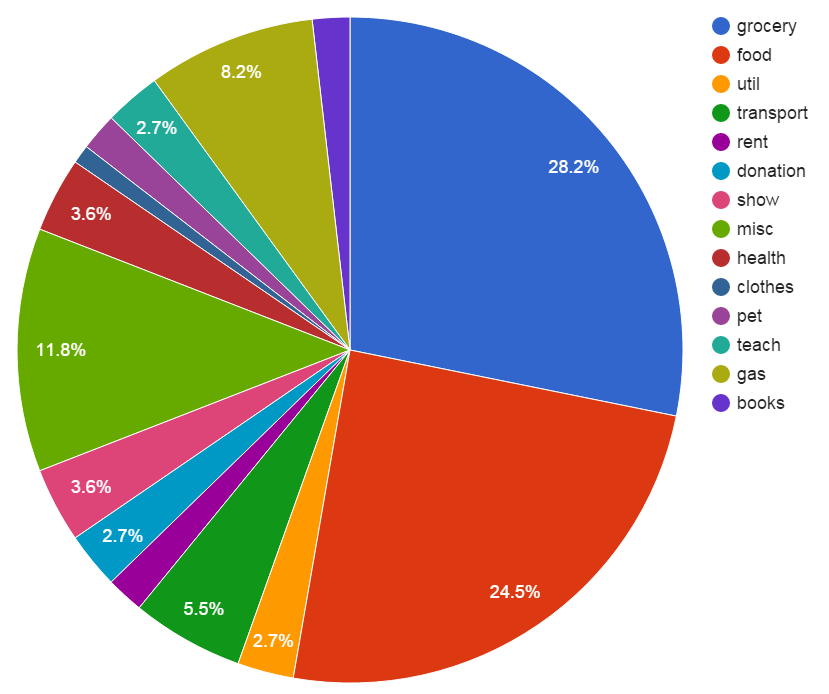
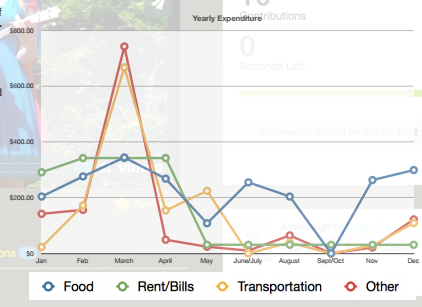
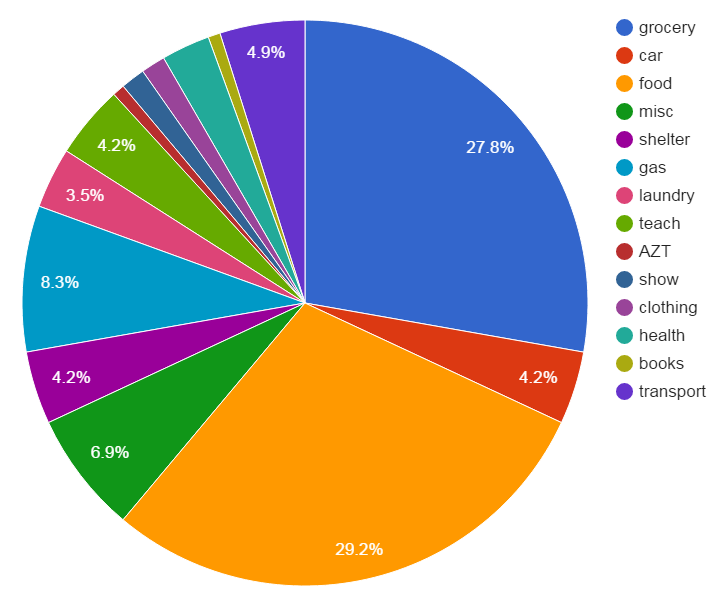
This is the first report published since the standards released by +PINA proposing diploma accreditation.
As part of gathering feedback and integration, I’m adapting the evaluation criteria down a scale to a specific project report.
Self Reflection:
Final score: 88/100
Schedule Proposal
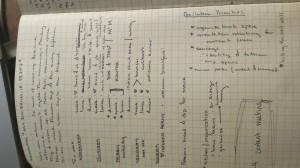 Sample of weekly meal plan
Sample of weekly meal plan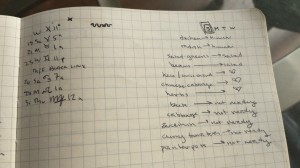 Taking note of moon position and ripeness of the garden
Taking note of moon position and ripeness of the garden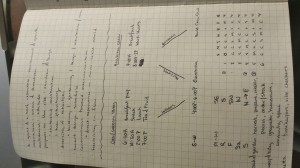 Organizing responsibilities
Organizing responsibilities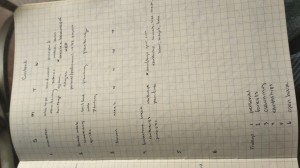
Organizing overall weekly schedule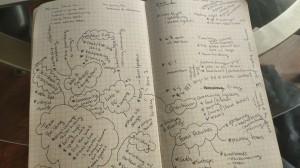
Content we wanted to cover in 6 weeks
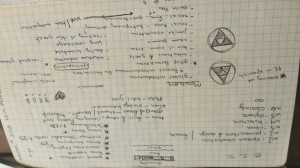
Reflection from meetings
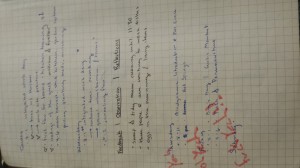 Reflection from meetings
Reflection from meetings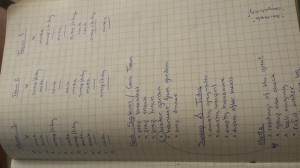
Defining intentions around the kitchen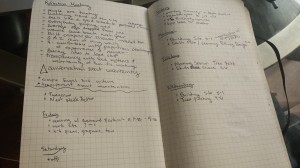
Daily temperature cycle July
Daily temperature cycle August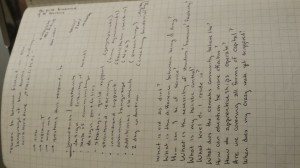
Project 8 Reflections
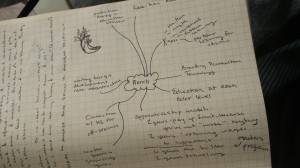 Starting branding for Theron’s ranch (unrelated to HEP)
Starting branding for Theron’s ranch (unrelated to HEP)
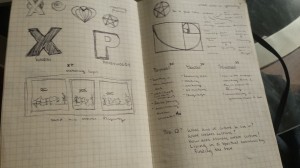 Branding for Theron’s ranch (unrelated to HEP)
Branding for Theron’s ranch (unrelated to HEP)
The project 8 geographical & metaphysical coordinates were set for Driggs, ID. It is in the volcanic region of Yellowstone, a place known for its active hydro-geothermal activity and constant, though incredibly minor, earthquakes. It’s surrounded by many national forests and wilderness, including Grand Tetons National Park, donated by the Rockefellers in 1943. Jackson Hole, the largest town across the pass, is an increasingly popular ski town, and its residents & tourists also enjoy the climbing, hiking, biking, and wildlife in summer.
Taiga and her husband Christian are building a home and educational center in the Teton Valley. Gaining insight from their time with the +Panya Project in Thailand and inspiration from the +Possibility Alliance in MO, they are becoming a hub in the Teton region. Through permaculture design, the personal connections, and their commitment to uplifted living, several experiments took place this summer. Awareness was focused largely in the following three areas.
The first was the building of an earthship home.
This is the main focus and motivator for the context of the summer, namely, getting a house built to the point where they could stay in it during the winter. This included carpenter friends, early-arrival interns, and other volunteers. Even though there were lists of activities to get through, the importance of order of process in building a house is specific, and about 50% unknown until faced with the next step.
The house is actually an “earthship-inspired” building as a few points from the original +Biotecture classics; as an example, they put their front door through their back tire berm, and included a double door system to balance the thermal stock from the surrounding tires. Driggs is about the same altitude as the New Mexican desert where this style was pioneered – in the 6000s. The sun angle and seasons are relatively similar.
Another point of interest is a strict and focused adherence to county code. At certain stages in the building, there was coordination with officials to inspect electrical (for example, they came to make sure there was an outlet every 6 feet in every habited room), plumbing, and wood work, all according to an engineer-approved plan that was approved for certain earthquake measures. This was what set most of the work tasks. One of our most productive streaks with the interns was laying several layers of leveled gravel, plastic, insulation, PEX pipe, and grating in preparation for a concrete crew to come pour the floor (which actually ended up being delayed by wet conditions).
In the end, the build was a playground of creative problem-solving, in wood and earth and metal. A problem, and a solution. We managed with the interns to build a living roof, start the in-fill for the inside tire wall, level & prepare the floor, and insulate the roof. The roof was built, tar papered, and crimped, and the concrete was poured and stained. Most of the south wall is enclosed by windows.
The second was an educational model of a gift economy internship.
Permaculture is a 72 hour educational model that equips you with the basic patterns needed to sustain a garden (water, soil, seeds), and the most basic patterns of +green-meme ethics (earth care, people care, fair share), as well as providing the starting points to skill paths such as building, herbalism, primitive skills, consulting, and all manner of regenerative offerings & service.
One of the major conversations within the teaching movement is the ability to make this type of education, which many working within believe is one of the most efficient ways to rebalance human systems at many scales, as accessible as possible.
In the effort of offering this experience at a live build, set to the background of regenerative soil, plant, and people systems, they offered three meals a day & a spot to camp, access to composting toilets and occassionally hot showers, a fully equipped kitchen with a full spread garden, community gathering space, and even cubbies for each guest.
Lessons were integrated after a full work-day, often out on the work site.
We had three facilitators. Christian, also acting as the project manager at the work site, had the most teaching experience. Geoffery had been teaching with Christian among the past 5 years. Bright Sky took the PDC certification with both of them in February 2012. We met before the course to set a daily schedule, weekly schedule, expected responsibilities, and intentions for the 6 weeks.
The final difference between cash invested into the course (CI) minus cash received in kind (CK) = ~$2500.
In total I facilitated approximately 4.5 hours of classroom time, and supported approximately 10 hours of others facilitating classroom time. The rest of the time was spent on the site, processing food, garden tending, and designing systems and to-do lists.
+See Journal Exerpts
The lesson I designed specifically for the course detailed many of the course expenses, the expected wage of a permaculture livelihood, and questions about different forms of capital, as well as a pop quiz on systems, inspired by the +EcoRise EcoSystem.
The third is a traditional business model – selling a product for money. We sold a 10″ pizza for $11-15.
This was the most fun mode. My job was a cashier at the farmer’s market. Three of us ran the stand – Taiga topping pizzas, Becky running the oven & fire, and myself as Bright Sky taking orders and money. Most times after the market I would feel lighter and ready for more social interaction – it was a very pleasant experience to provide people with nutritious food. And nutritious interaction! During the clown camp we brought a whole comedic performance to the market.
Each ingredient was sourced from either a local, organic, or biodynamic source. There are at least three biodynamic farms in Teton Valley, one of which has a stand across from ours at the market (handy when we start to run low on certain ingredients). This means they use certain biological/geological additives, awareness of astrological positioning, mostly the moon, and encourage the most internal biomass recycling possible. Ingredients that are difficult to find well-produced in the bioregion, such as wheat flour and salt for the dough, were sourced from organic producers in other parts of the country.
Each step of the process, from the dough mixing, to the sauce prep, to frying sausage, was intentionally fresh and delicious, done in small batches each week.
Each pizza is made to order on a hearth fired with lodge pole pine.
Needless to say, it’s pretty damn good pizza.
To set yourself up for success, surround yourself with good people, do your best to eat food that will nourish you, and pay attention to your inputs and outputs. Honesty is not always the easiest thing. Is it true? Is it necessary? Is it kind?
Many pictures in this report are borrowed from the +Higher Elevation Permaculture Instagram for educational purposes.
One Side
Second Side
Cabbage & Sage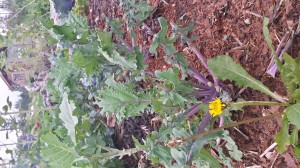 Kale & Dandelion
Kale & Dandelion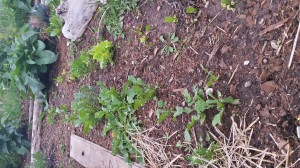 Mesclun Mix from seed
Mesclun Mix from seed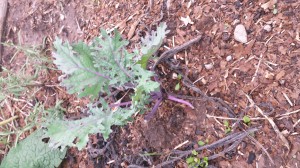
One tomato plant didn’t fare as well, even with the same conditions, moisture, and soil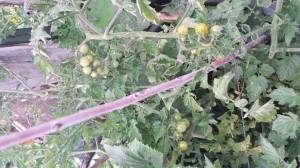
Tomatoes have a hard time ripening with the short warm season
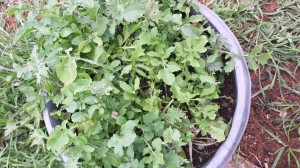 Cress & Kale from seed
Cress & Kale from seed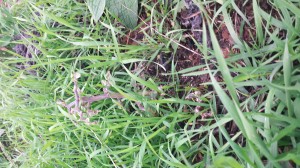
A dwarf cherry tree planted in the ground didn’t quite make it
Looks like a different color bee balm?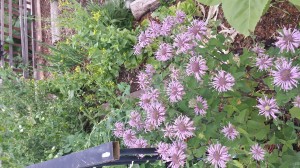 Bee balm herb
Bee balm herb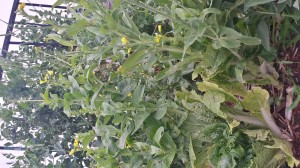 The chinese cabbage bolted very quickly – fortunately the flowers were also pretty tasty
The chinese cabbage bolted very quickly – fortunately the flowers were also pretty tasty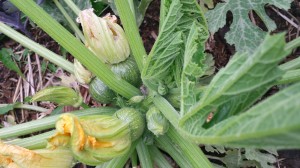
Little zucchini plants
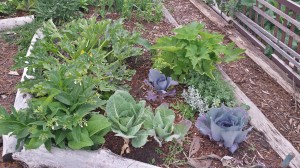 Cabbage, comfrey, zucchini
Cabbage, comfrey, zucchini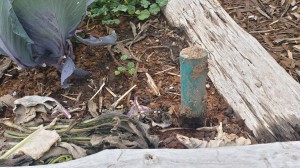
Well – used copper tool
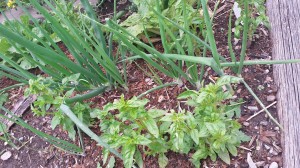 Onions & Basil
Onions & Basil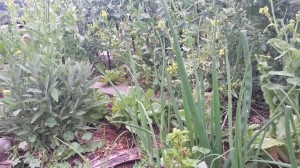
Sage
In small amounts
Beans
Beans from seed that never bloomed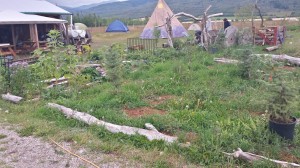
The extended tree plot that received the kitchen greywater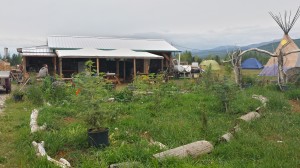
Community area
The other end of the propane tank
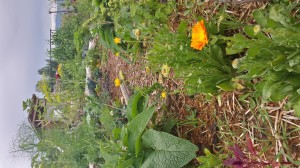
Herb View
One harvest round from the garden, used to make kimchi
Second batch of kimchi from the garden, made in Chico
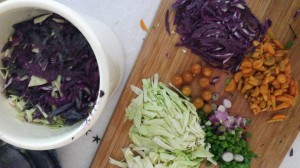 Cute!
Cute!